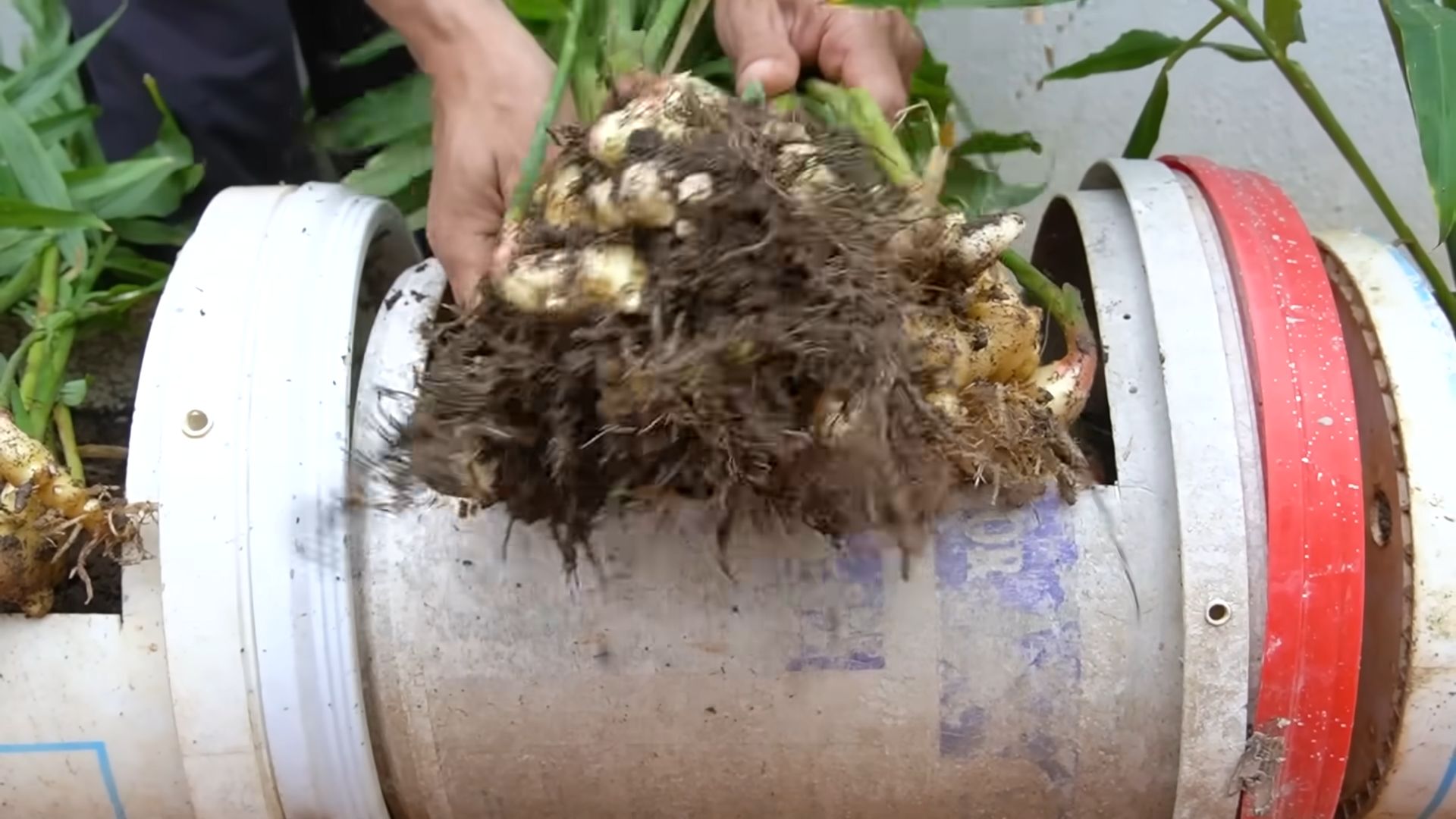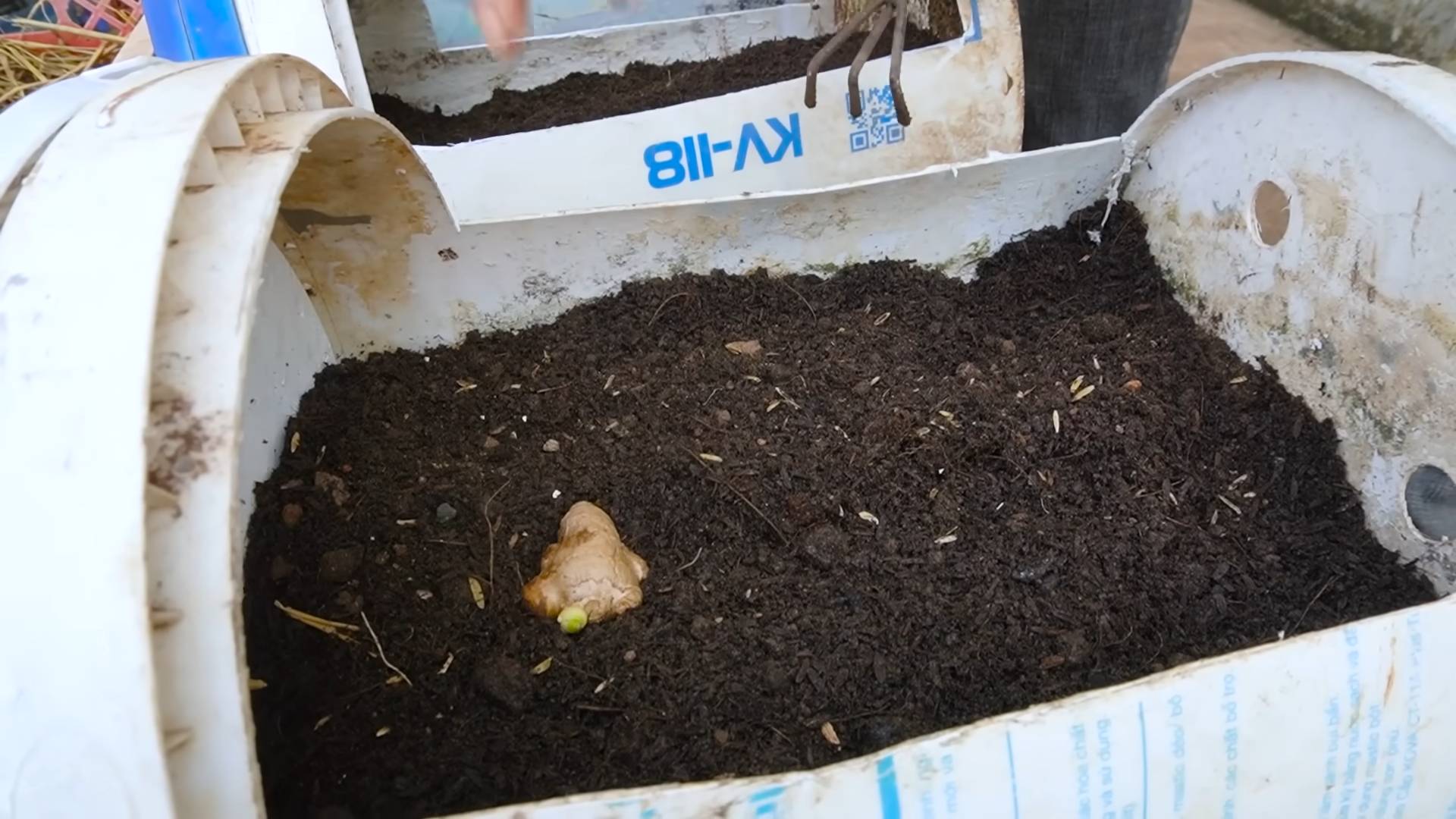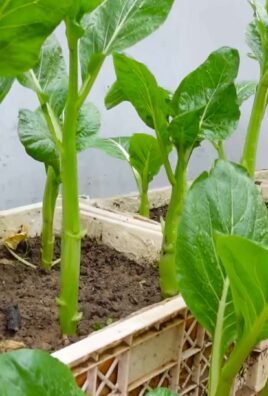Grow ginger at home? Absolutely! Imagine stepping into your kitchen and harvesting fresh, zesty ginger straight from your own little garden. No more trips to the grocery store or settling for lackluster, store-bought roots. This DIY guide is your passport to a world of flavorful possibilities, and trust me, it’s easier than you think!
Ginger, with its fiery kick and incredible health benefits, has been cherished for centuries. Originating in South Asia, it’s been used in traditional medicine and culinary practices across the globe. From ancient Ayurvedic remedies to modern-day stir-fries, ginger’s versatility is undeniable. But did you know you can easily cultivate this amazing spice right in your own home?
In today’s world, where we’re all looking for ways to be more self-sufficient and connect with nature, learning to grow ginger at home is a game-changer. Not only will you have a constant supply of fresh ginger, but you’ll also experience the joy of nurturing a plant from rhizome to harvest. Plus, it’s a fantastic way to add a touch of green to your living space and impress your friends with your green thumb. So, let’s dive in and unlock the secrets to growing your own ginger paradise!

Grow Your Own Ginger: A Beginner’s Guide to a Bountiful Harvest!
Hey there, fellow plant enthusiasts! Ever thought about growing your own ginger? It’s surprisingly easy and incredibly rewarding. Imagine having fresh, flavorful ginger right at your fingertips whenever you need it. No more trips to the grocery store! I’m going to walk you through the whole process, from choosing the right ginger to harvesting your very own crop. Let’s get started!
Choosing Your Ginger Rhizome
First things first, you need a ginger rhizome (that knobby root we call ginger). Not all ginger is created equal when it comes to growing. Here’s what to look for:
- Organic is Best: Opt for organic ginger from your local grocery store or farmers market. Non-organic ginger might be treated with growth inhibitors to prevent sprouting.
- Look for “Eyes”: Just like potatoes, ginger rhizomes have “eyes” – small buds that will eventually sprout into new plants. Choose a rhizome with plump, healthy-looking eyes.
- Firm and Healthy: The rhizome should be firm to the touch and free from any signs of mold, shriveling, or damage.
- Avoid Smooth, Shiny Ginger: This ginger is often treated to prevent sprouting.
Preparing Your Ginger for Planting
Okay, you’ve got your ginger! Now, let’s get it ready for its new home.
1. Soaking the Rhizome (Optional but Recommended): I like to soak my ginger rhizome in lukewarm water for 12-24 hours before planting. This helps to rehydrate it and encourage sprouting. It’s not absolutely necessary, but I’ve found it gives the ginger a little head start.
2. Cutting the Rhizome (If Necessary): If your ginger rhizome is large, you can cut it into smaller pieces, making sure each piece has at least one or two “eyes.” This allows you to grow multiple ginger plants from a single rhizome. Let the cut pieces air dry for a day or two to allow the cut surfaces to callous over. This helps prevent rot.
Planting Your Ginger
Now for the fun part – planting!
1. Choosing the Right Pot: Ginger needs room to spread its roots, so choose a pot that’s at least 12 inches in diameter and 12 inches deep. A wider pot is better than a deeper one. Make sure the pot has drainage holes to prevent waterlogging.
2. Selecting the Right Soil: Ginger thrives in well-draining, nutrient-rich soil. A good potting mix is essential. I recommend a mix of:
- Potting soil
- Compost
- Perlite or vermiculite (for drainage)
Mix these ingredients together in equal parts to create a light and airy soil mix.
3. Planting the Rhizome: Fill your pot with the soil mixture, leaving a few inches of space at the top. Place the ginger rhizome on top of the soil, with the “eyes” facing upwards. Cover the rhizome with about 1-2 inches of soil.
4. Watering: Water the soil thoroughly after planting, making sure the water drains out of the bottom of the pot.
Caring for Your Ginger Plant
Ginger is relatively low-maintenance, but here are a few key things to keep in mind:
1. Location, Location, Location: Ginger loves warmth and humidity. Place your pot in a location that receives bright, indirect sunlight. Direct sunlight can scorch the leaves. An east-facing window is ideal.
2. Watering: Keep the soil consistently moist, but not soggy. Water when the top inch of soil feels dry to the touch. Overwatering can lead to root rot, so be careful!
3. Humidity: Ginger thrives in humid environments. If you live in a dry climate, you can increase humidity by:
- Misting the leaves regularly with water.
- Placing the pot on a tray filled with pebbles and water (make sure the bottom of the pot isn’t sitting directly in the water).
- Using a humidifier in the room.
4. Fertilizing: Feed your ginger plant every 2-3 weeks with a balanced liquid fertilizer during the growing season (spring and summer). Follow the instructions on the fertilizer label.
5. Temperature: Ginger prefers temperatures between 65°F and 90°F (18°C and 32°C). Protect your plant from frost and cold drafts.
Troubleshooting Common Problems
Even with the best care, you might encounter a few issues. Here’s how to deal with them:
1. Yellowing Leaves: This could be a sign of overwatering, underwatering, or nutrient deficiency. Check the soil moisture and adjust your watering accordingly. If the soil is consistently moist, reduce watering. If the soil is dry, water more frequently. You can also try fertilizing your plant.
2. Root Rot: This is caused by overwatering and poor drainage. If you suspect root rot, carefully remove the plant from the pot and inspect the roots. If the roots are brown and mushy, trim away the affected areas. Repot the plant in fresh, well-draining soil.
3. Pests: Ginger is generally pest-resistant, but occasionally you might encounter aphids or spider mites. These can be treated with insecticidal soap or neem oil.
Harvesting Your Ginger
The moment we’ve all been waiting for! You can start harvesting ginger about 8-10 months after planting.
1. When to Harvest: The leaves of your ginger plant will start to turn yellow and die back when it’s ready to harvest. This usually happens in the fall or winter.
2. Harvesting: To harvest, gently dig around the plant and lift the rhizome out of the soil. You can harvest the entire rhizome or just a portion of it, leaving the rest to continue growing.
3. Storing Your Ginger: Freshly harvested ginger can be stored in the refrigerator for several weeks. Wrap it in a paper towel and place it in a plastic bag. You can also freeze ginger for longer storage.
Enjoying Your Homegrown Ginger
Now that you’ve harvested your ginger, it’s time to enjoy the fruits (or rather, roots!) of your labor. Here are a few ideas:
- Cooking: Use fresh ginger in stir-fries, soups, curries, and other dishes.
- Tea: Make a soothing ginger tea by steeping slices of fresh ginger in hot water.
- Baking: Add grated ginger to cookies, cakes, and breads.
- Pickling: Pickle ginger to enjoy as a condiment.
Propagating Your Ginger
Once you’ve successfully grown ginger, you can easily propagate it to create even more plants.
1. Dividing the Rhizome: When you harvest your ginger, you can divide the rhizome into smaller pieces, making sure each piece has at least one or two “eyes.”
2. Replanting: Plant the divided rhizomes in fresh potting mix, following the same instructions as above.
3. Enjoy Your New Plants: With a little care, your new ginger plants will thrive and provide you with a continuous supply of fresh ginger.
Extra Tips for Success
Here are a few extra tips to help you grow the best ginger possible:
* Use a Terracotta Pot: Terracotta pots are porous, which helps to improve drainage and prevent overwatering.
* Rotate Your Plant: Rotate your ginger plant regularly to ensure that all sides receive equal sunlight.
* Be Patient: Ginger can take several months to sprout, so don’t get discouraged if you don’t see results right away.
* Experiment: Try different varieties of ginger to find your favorite.
Growing your own ginger is a fun and rewarding experience. With a little patience and care, you can enjoy a bountiful harvest of fresh, flavorful ginger right from your own home. Happy growing!

Conclusion
So, there you have it! Growing ginger at home is not only surprisingly simple, but it’s also incredibly rewarding. Imagine the satisfaction of harvesting your own fresh, flavorful ginger whenever you need it, knowing exactly where it came from and how it was grown. Forget those bland, store-bought rhizomes that have been sitting on shelves for weeks. With this DIY trick, you’ll have access to vibrant, aromatic ginger that will elevate your cooking to a whole new level.
This isn’t just about saving money (though that’s certainly a perk!). It’s about connecting with your food, understanding the growing process, and enjoying the unparalleled taste of homegrown ingredients. Think of the possibilities! You can add freshly grated ginger to your stir-fries, teas, smoothies, and baked goods. You can even experiment with making your own ginger ale or candied ginger. The possibilities are truly endless.
Why is this a must-try? Because it’s easy, cost-effective, and delivers superior results. You’ll be amazed at how quickly your ginger plant thrives, and you’ll be even more amazed at the flavor difference compared to store-bought ginger. Plus, it’s a fantastic way to add a touch of green to your home, even if you don’t have a traditional garden.
Looking for variations? Consider growing different varieties of ginger! There’s common ginger, of course, but also galangal (also known as Thai ginger) and turmeric, which are grown in a similar fashion. Experiment with different pot sizes and soil mixes to see what works best for your environment. You can even try growing ginger in a raised garden bed if you have the space. Another fun variation is to grow ginger indoors during the colder months and then transplant it outdoors when the weather warms up. This allows you to extend your growing season and enjoy fresh ginger year-round.
We wholeheartedly encourage you to give this DIY trick a try. It’s a fun, educational, and delicious project that the whole family can enjoy. Don’t be intimidated if you’ve never grown anything before. Ginger is a relatively forgiving plant, and with a little bit of care, you’ll be harvesting your own crop in no time.
And most importantly, we want to hear about your experience! Share your photos, tips, and stories in the comments below. Let us know what challenges you faced, what successes you celebrated, and what delicious recipes you created with your homegrown ginger. Together, we can build a community of ginger-growing enthusiasts and inspire others to embrace the joys of DIY gardening. So go ahead, get your hands dirty, and discover the magic of growing ginger at home! You won’t regret it.
Frequently Asked Questions (FAQ)
What kind of ginger should I use to start growing?
The best ginger to use for starting your own plant is fresh, organic ginger root from the grocery store. Look for rhizomes that are plump, firm, and have visible “eyes” or buds. Avoid ginger that is shriveled, soft, or has signs of mold. Organic ginger is preferred because it is less likely to have been treated with growth inhibitors. If you can’t find organic, conventional ginger can still work, but you may need to soak it in water overnight to help remove any potential chemicals.
How long does it take to grow ginger from a rhizome?
The time it takes to grow ginger from a rhizome can vary depending on several factors, including the variety of ginger, the growing conditions, and the climate. Generally, you can expect to see sprouts emerging from the rhizome within a few weeks. It typically takes around 8-10 months to fully mature and be ready for harvest. However, you can start harvesting small pieces of ginger after about 4 months if you need them for cooking.
What is the best soil for growing ginger?
Ginger thrives in well-draining, nutrient-rich soil. A good soil mix would be a combination of potting soil, compost, and perlite or vermiculite. The potting soil provides a base for the plant to grow, the compost adds essential nutrients, and the perlite or vermiculite improves drainage and aeration. Avoid using heavy clay soil, as it can retain too much moisture and lead to root rot. The ideal pH level for ginger is between 6.0 and 6.5.
How much sunlight does ginger need?
Ginger prefers partial shade to filtered sunlight. Avoid exposing it to direct sunlight, especially during the hottest part of the day, as this can scorch the leaves. If you’re growing ginger indoors, place it near a window that receives bright, indirect light. If you’re growing it outdoors, choose a location that is shaded by trees or other plants.
How often should I water my ginger plant?
Ginger needs consistent moisture but doesn’t like to be waterlogged. Water your ginger plant when the top inch of soil feels dry to the touch. Water thoroughly, ensuring that the water drains out of the bottom of the pot. Avoid overwatering, as this can lead to root rot. During the warmer months, you may need to water more frequently than during the cooler months.
What are some common problems when growing ginger, and how can I prevent them?
Some common problems when growing ginger include root rot, pests, and nutrient deficiencies. Root rot is caused by overwatering and poor drainage. To prevent it, ensure that your soil is well-draining and avoid overwatering. Pests, such as aphids and spider mites, can be controlled with insecticidal soap or neem oil. Nutrient deficiencies can be addressed by fertilizing your ginger plant with a balanced organic fertilizer every few weeks.
Can I grow ginger indoors?
Yes, you can absolutely grow ginger indoors! In fact, growing ginger indoors is a great option if you live in a colder climate. To grow ginger indoors, choose a pot that is at least 12 inches in diameter and has drainage holes. Use a well-draining potting mix and place the pot in a location that receives bright, indirect light. Water regularly and fertilize every few weeks. You may also need to provide supplemental humidity, especially during the winter months when the air is dry.
How do I harvest ginger?
You can start harvesting ginger after about 8-10 months, or even earlier if you just need a small amount. To harvest, gently dig around the plant and lift the rhizome out of the soil. You can harvest the entire rhizome or just a portion of it, leaving the rest of the plant to continue growing. After harvesting, wash the ginger root thoroughly and store it in a cool, dry place.
Can I grow ginger in containers?
Yes, growing ginger in containers is an excellent way to cultivate this spice, especially if you have limited space or live in a region with cold winters. Choose a container that is at least 12 inches deep and wide to allow the rhizomes to spread. Ensure the container has drainage holes to prevent waterlogging. Use a well-draining potting mix rich in organic matter. Place the container in a location that receives partial shade to filtered sunlight. Water regularly, keeping the soil consistently moist but not soggy. Fertilize every few weeks with a balanced organic fertilizer.
What are the benefits of growing my own ginger?
There are numerous benefits to growing your own ginger. First and foremost, you’ll have access to fresh, flavorful ginger whenever you need it. Homegrown ginger is often more potent and aromatic than store-bought ginger. You’ll also know exactly where your ginger came from and how it was grown, ensuring that it’s free from harmful chemicals and pesticides. Growing your own ginger is also a cost-effective way to enjoy this versatile spice. Plus, it’s a fun and rewarding gardening project that can add a touch of green to your home. Finally, you can harvest ginger leaves to make tea.




Leave a Comment